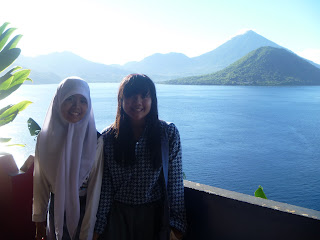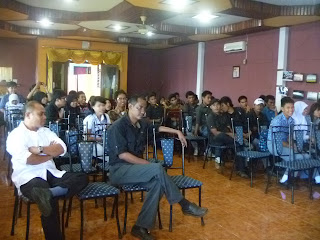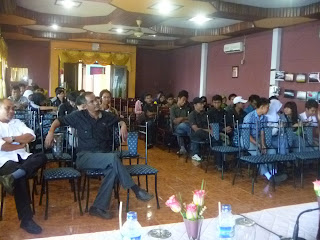here are a few tips to take pictures while raining:
Carry a raincoat for your camera.
There are about a million rain covers for camera gear on the market. The real problem is having it with you when it starts to rain. Anything that will protect your camera completely against every storm, up to and including a hurricane, may well be too bulky to carry every day. My advice: Carry camera rain gear in your bag that won’t take up too much space and will get you by in a pinch. My current favorite is the Storm Jacket from Vortex Media (www.warmcards.com/SJ1.html). It has an adjustable elastic band up front to cinch around the front of the lens and another at the back to give your hand room to reach inside to run the camera. Simple but effective in many wet situations.
Carry a gallon-size plastic bag.
In a pinch, it will do a passable job of keeping a camera dry. Punch a hole in one end to poke the lens through and stick your hand in the other end.
Look for porches and awnings.
Park under a dry spot and wait for the pictures to come to you. Have a glass of wine, read a book, discuss Proust ad infinitum. Just be patient.
Shoot from inside a car.
This is often the best course of action, and sometimes it's the only practical answer. You can often roll down the window and stay pretty dry, especially if the wind is at your back (coming from the other side of the car). This was the case when I photographed a freight train of a thunderstorm out in the Flint Hills of Kansas for National Geographic magazine. I outraced the storm to a great vantage point and turned the car sideways so I could look down a winding pasture road. The rain beat mercilessly behind me as the funnel clouds dipped and soared, but I kept dry and kept shooting. (Don’t try this at home.)
Buy an umbrella.
I always carry a small folding umbrella in my camera bag. It’s five inches long (13 centimeters) folded—just big enough to keep my camera out of the worst wetness. If you are in a city when it starts to rain, look around for an umbrella vendor. I found one in Venice and bought two, each a different color. (Why? There’s a tip about this coming up.) It would be nice if you had a trusty assistant (or patient spouse) to carry the umbrella, but I find I can do a lot of work just holding the shaft of the umbrella in my left hand, which also grips the camera. A little awkward, yes, but it has the advantage of keeping the umbrella right over the camera. (Do I need to add here that this advice does not apply in thunderstorms? Umbrellas are remarkably akin to lightning rods in physical construction and work pretty much the same. Remember: If you can hear thunder you are within striking distance of lightning.)
Include the umbrella in your picture.
Actually, your own umbrella can be a very nice compositional framing device. Bring it down into the top of the picture when you are shooting with a wide angle and it nicely fills the upper part of the frame, providing a nice visual cue that it is, in fact, raining. If the streets are full of people under umbrellas, yours fits in with the crowd. But it can do one more important thing. While we think of rain clouds being dark and foreboding, they are, in fact, often the light source for a rainy scene. Hence, the clouds are bright and the scene below is dark. Use the umbrella to cover up the too-bright clouds and your scene can suddenly look much better exposed. (Those two umbrellas I bought in Venice? It was because I wasn’t sure which color would look best in my pictures.)
Watch for reflections.
Unless you are in a downpour, it is difficult to actually see the rain itself. So you have to leave visual clues that it is raining. Look for ways that the rain transforms banal scenes into rich, reflected murals. This is what made the streets of Venice so glittering at night during our workshop. It also is the reason I chased that pigeon all over that piazza, silhouetting it against the reflected storefronts.
Backlight the rain.
Rain becomes more visible when it is backlit. The light coming through the raindrops is concentrated and slightly brighter than the rest of the scene. So find some light sources and shoot toward it. This could be a streetlight at night, or it could be the sun breaking though the clouds. Whatever the case, the rules are the same. One, the more directly you shoot into the light, the better you can see the raindrops. Two, shoot too directly and the light source will overpower your exposure. So always seek that magic angle in between. By the way, that umbrella you’ve been carrying can serve as a serviceable lens shade.
Pop just a little flash.
Huh? No, really, I mean it. Your flash will light up the raindrops, usually a bad thing because it will pump out way too much light as it tries to light up your subject. You don’t want that. But turn it way down (like -3.0 stops) and it will add just a little pop to the raindrops. This technique is tricky; you’ll have to experiment. Maybe it won’t work at all, but if it does, it can be quite magical. (Also works on snowflakes sometimes.)
Be on the lookout for joy or misery. Rain transforms people. We react to rain with a gamut of emotions, from the sullen dread of rain-drenched commuters to the wondrous joy of children. Capture those emotions and you’ll have a great rain picture.
males translate.
cr.:national geography
























